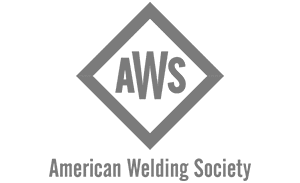QuattroFlow Pumps- A New Leader in Pharmaceutical Positive Displacement
Going along with our product centric Tuesday posts and recent focus on positive displacement pumps, I wanted to go back over a product that is new to us and address some of the drawbacks of traditional positive displacement pumps. Holland has recently become the authorized distributor of Quattroflow pumps. This blog will address the unique advantages of the Quattroflow and why we’re starting to see more and more of our high purity customers switch over to this technology.
As our five piece series on successful sanitary skid builds (hopefully) made abundantly clear, we build a lot of high purity process systems. And we’re really good at it. At a very high level, let’s take a look at some of the challenges of handling extremely valuable biologics on a process scale.
First, most therapeutics are shear and heat sensitive. We can’t be whipping them around and adding a lot of heat. A lot of these products are proteins. Proteins have unique secondary and tertiary structures and arrangements of their amino acid sub components that need to be handled delicately. This all but disqualifies centrifugal pumps from being a good product pumps and relocates them to the world of high purity water and CIP supply and return. They just impart too much heat and shear to be considered effective for biologics handling.
Next, they need to be efficient and capable of producing high pressures. We’ll talk more about specific applications later, but pressures of up to 5 or 6 bar are often required. This disqualifies peristaltic pumps. These flexible tubing pumps use rollers that squash the tubing, this leads to wear and limits their application in high-pressure applications. Also, while lobe and ECP style PD pumps are very efficient at handling highly viscous liquids, we do see some slip with the lower viscosity liquids common in pharmaceutical applications. Most of the hooch isn’t more than 60 or 70 centipoise.
The next attribute I look for is the technology ought to be scalable. Most of these processes start out on a lab bench, work their way through trials and pilot runs, and may someday see full production scale. Wouldn’t it be great if you could use the same technology to move 100 mL/min and 100 L/min? Low flows are another area that lobe and ECP pumps struggle and the Masterflex’s and Flexicon’s of the world can’t match the capacity of Quattroflow’s larger models.
The next things to consider are materials of construction and proper documentation. Waukesha Universal series pump, which are great pumps, and often listed as an approved equipment manufacturer by pharma companies, use non-galling Alloy 88 rotors. This is not 316L stainless. They can be ordered with optional 316L rotors and electro polish, but these are expensive and the additional documentation required is also costly.
The worst kept secret in the industry is that many lobe type pumps rub. This leads to galling and particulate shedding. Watson Marlow keys in and focuses on that when pitching their sine pumps. In food processing, this rubbing isn’t an issue, but when we’re using the pump to feed extremely expensive cross flow and membrane filters that foul easily, it’s easy to see why this could be a problem.
When I review an engineering company’s spec sheet and I see these huge PD pumps specified, I go through and start adding up all of the costs and find myself thinking, “There has to be a better solution”. I mean, what positive characteristics of lobe and ECP pumps are we really leveraging? We’re not pumping hard to move, high viscosity product. Lobe pumps are not the easiest pumps to clean through (as was highlighted in a previous blog post). Some use front-loading mechanical seals in the product contact zone. And while gentle, they aren’t scalable from the lab bench to the manufacturing suite.
So what is the answer to this pumping challenge? Well, at Holland, we think we’ve found one and the industry seems to agree. Quattroflow. Quattroflow pumps use four diaphragms and check valves to move product. The diaphragms are driven one after another by a connector plate, which moves back and forth out of its central position in a stroke that is generated by an eccentric shaft, with the length of the stroke determined by the angle of the eccentricity.
Quattroflow technology has been modeled on the operation of the human heart—which is eminently capable of pumping whole human blood, one of the most shear-sensitive products around—with its four pumping chambers and check valves keeping product flow constantly moving forward.
The pump chamber of a Quattroflow contains no moving parts. No moving parts mean low friction and low heat. And there are no rotating mechanical seals so these pumps can be run dry and are self-priming. The Quatrroflow offers smooth, pulsation free flow and are scalable from 16 mL/min all the way up to 360L per minute. Quattroflow ports can also be orientated in the vertical position and allow for full draining during clean and steam in place cycles. While the use of check valves in a high purity pump had long been taboo, recent applications of Quattroflow have dispelled those concerns.
So when we distill it down, what do we have? We have a pump that is cleanable, steamable, drainable, accurate, scalable, has high turndown, is pulsation free, and won’t damage my product. Diaphragms are USP Class VI and stainless steel components are 316L, electropolished, and factory provided documentation is comprehensive. We have a pump that I can use on my lab bench and spec in a million dollar process system. That’s to say nothing of optional single use pump heads to complement and be interchanged with stainless heads.
That’s not to say the Quattroflow is perfect for every application. They aren’t inexpensive and can’t handle the variety of products that a lobe pump can. The Quattroflow is limited to products with viscosities under approximately 300 cps. The technology isn’t proven in the way old workhorse lobe pumps are. It’s a new technology with many applications being the first time a Quattroflow has been asked to perform under those circumstances. The pump diaphragms are a spallation concern and need to be maintained and replaced. We need to carefully identify the correct applications to apply these pumps.
It goes without saying, we need to be selective when utilizing a pump technology. Keep in mind that when selecting a pump we need to be able to take full advantage of its strengths to implement effective, economical solutions. The Quattroflow is just another pump in our utility belt that we should be aware of whether you’re exploring new processes or looking to optimize existing ones. Hopefully this post sheds some light on the rapidly emerging technology and gives you some ideas for current and future applications. Contact a Holland Sales Engineer today for more information.







